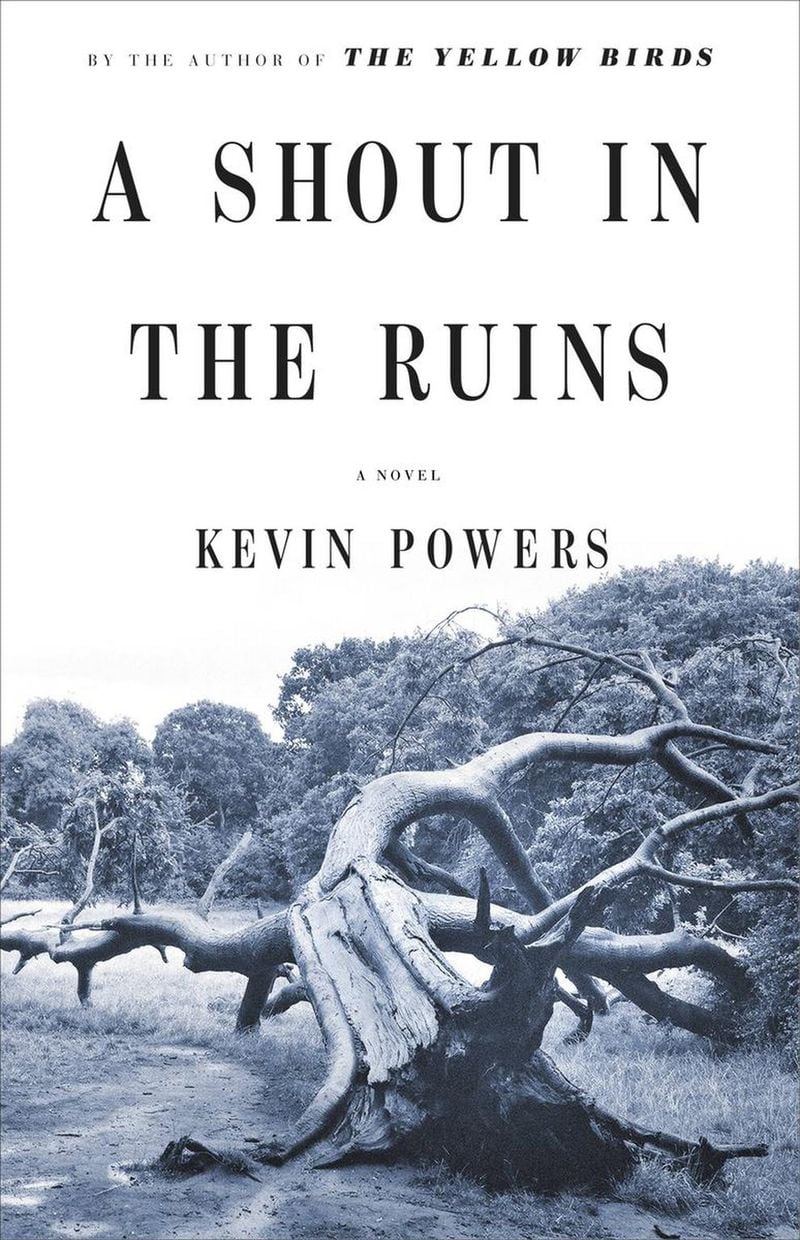Kevin Powers’ “A Shout in the Ruin” hopscotches from the Civil War to the mid-1980s, meandering through threads of intersecting black, white and multiracial lives, though pointedly it doesn’t successfully untangle the knots that those threads make or even articulate why the tangling is necessary beyond narrative contrivance. Each chapter offers up new perspectives and voices — the novel is still introducing major characters two-thirds of the way in — so that we’re continually resetting our understanding of the novel’s world.
Underneath the narrative trickery and fragmentation, though, is a very old story that I’m tired of reading. But, if I’m going to explain why I dislike “A Shout in the Ruins” so much, I’m going to need to give spoilers, because its narrative cliches are a big part of the problem. You’ve been warned.
Then again, Powers telegraphs everything portentously, anyway. Here’s the novel’s opening sentence: “By 1870, not even four full years after the clerk of Chesterfield County, Virginia, officially recorded Emily Reid Levallois’ death, rumors of her survival and true whereabouts abounded.” Twenty pages and 86 years later, Powers introduces another major character: “On the last Monday evening of his life, George Seldom took a bath, shaved with a new razor bought from Levy’s store the day before, dressed in jeans, a denim shirt, and a ratty buckskin coat he’d had for as long as he could remember.” Forty pages later, we learn that George’s mother, a woman enslaved by the Levallois family named Nurse, was murdered when George was an infant in 1865.
So, a dark inevitability hangs over “A Shout in the Ruins,’ an unrelenting bleakness intended to give importance to the novel’s meditations on the sins of slavery. For all the bloodletting, though, little of it resonates because the characters caught up in this pain ring false. They exist as archetypes, not rounded protagonists, their lives predetermined by the prism of the Civil War through which we see them.
And I’m so tired of that prism, that trope that renders the South as an inevitable tragedy of racial anguish. No character in “A Shout in the Ruins” escapes that tragedy, and the ways in which they succumb to it are cliched to the point of unintentional parody. Antony Levallois, the evil plantation owner who is the fulcrum for much of the novel’s violence, gets ultimately slayed by his slaves. Those same slaves (Nurse and her husband Rawls) are killed hours later by racist marauders, not allowed any sort of reprieve from the novel’s pre-destined bleakness. Their child (George) dies alone, 90 years later, not having resolved the mystery of his parentage. The Levallois plantation burns to the ground at the end, and the poor simpleton who did it is hung for it, though he doesn’t even fully understand why any of it happened. Even George’s friend Lottie, who helps him recover his past in the 1950s, gets diagnosed with inoperable cancer just as she’s found true happiness in the mid-1980s.
Sorrow, grief and unresolved longing are parts of life. I get it. But their presence here is unearned and cheap. The three-part structure, the sweep through a century of American life, the circuitously abstract prose and the ferocious violence are all methods of obscuring the novel's ultimate banality and sentimentality. There's not much there there.
This false fatality feels especially hollow when you remember just how many abolitionists, Reconstruction politicians, black activists and lecturers and intellectuals actively fought against that “pre-ordained” Southern destiny at the time. They understood the horror expressed through “A Shout in the Ruins” better than anyone but they resisted — through gospel, activism, the Underground Railroad and political advocacy. They’re nowhere to be seen here. I wasn’t looking for a happy ending, but the novel lacks any sense of how black life is animated by something beyond despair and impotence. This is just the flipside of sentimentalized hope, and not anything true, not anything tethered to the complex contours of black life.
Powers is more interested in cliches than in life. Antony Levallois, so genteel and cultured and rapacious, reminded me of nothing so much as Calvin Candie in Quentin Tarantino’s film “Django Unchained,” except that Tarantino as director and Leonard DiCaprio as actor understood that the cultured-but-corrupt character was a parody of Hollywood villains. The novel’s characters are all types from bad books and even worse movies — from the middle-class white woman (Emily Reid Levallois) fleeing her life to her impotent war-damaged father, from the long-suffering black slave Nurse to her mutilated spouse Rawls, from the mentally handicapped, Boo Radley-esque kid roaming the territory to the inexplicably vicious scavenger-murderer.
The biggest cliché, of course, is that Powers can’t conceive of Southern black life outside of violent misery, and even then only through the lens of the Civil War. In particular, the novel sees the war only as a tragedy and expects his audience to do so as well, disregarding the black readers (like me) who might instead see it as a sort of cleansing, of America finally wrestling with its democratic promise.
“A Shout in the Ruins” doesn’t seem intended for anyone who doesn’t look like Powers, or who understands the awful legacy of slavery differently than white Southerners might. That’s a shame, for there are occasional flashes of insight, plainly expressed. The brief 1980s section, which is tangential to this book, feels like the beginning of a well conceived, fully felt novella. The closer Powers gets in his chronology to the present day, the more vivid and precise he is. Maybe he should stick to the present.
FICTION
‘A Shout in the Ruins’
by Kevin Powers
Little, Brown and Company
272 pages, $26
About the Author








